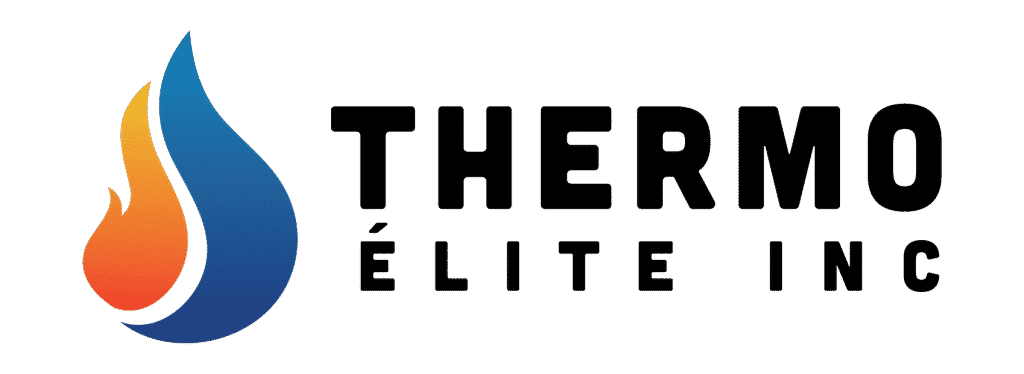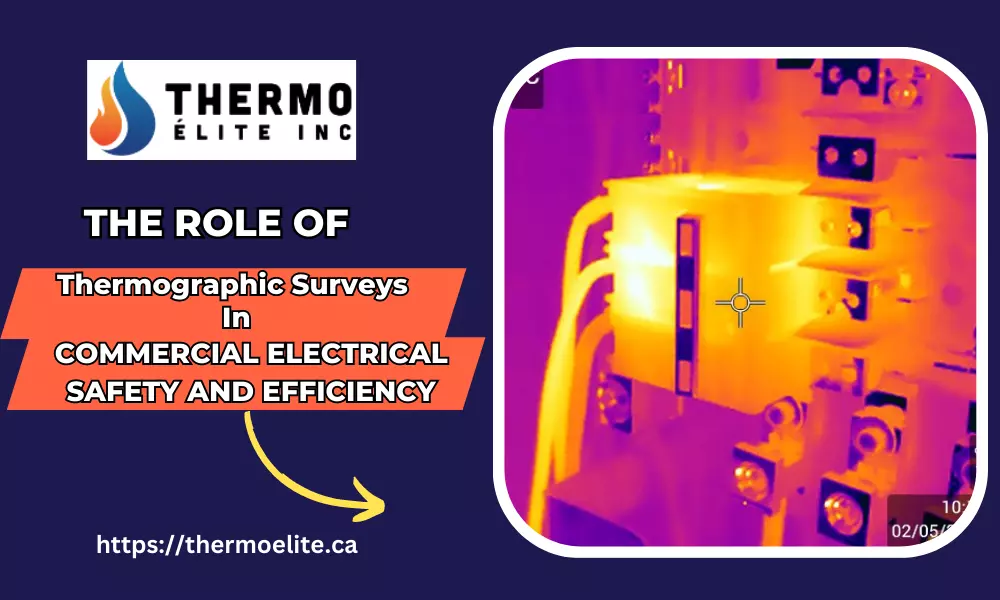Thermographic surveys are essential in guaranteeing the safety and effectiveness of commercial electrical systems. The use of infrared thermography provides critical information on the condition of these systems, which aids in detecting potential problems, preventing accidents, and optimizing energy consumption. Thermal imaging can detect electrical faults such as loose connections, overloaded circuits (the primary cause of electrical fires), cooling issues in transformers, faults in motor windings, and induced currents.
A thermographic survey is a non-intrusive inspection method that examines various types of electrical equipment such as distribution fuse boards, MCB boards, contactors, switchboards, transformers, motors, battery banks, UPS, control panels, switch fuses, and isolators. This inspection is conducted while the equipment is in use, ensuring that there is no interruption to normal business operations. Electrical thermal imaging surveys are safe and efficient inspections that can be completed without interfering with business operations because they are non-intrusive.
What Is Electrical Thermography?
The use of infrared thermography technology to evaluate the state and functionality of electrical systems is referred to as electrical thermography, also known as infrared electrical inspections or electrical infrared thermography. In order to find potential problems, abnormalities, and inefficiencies, it entails taking thermal photographs of electrical equipment, connections, and components.
How Electrical Thermography Operates Is as Follows:
Infrared cameras
Electrical thermography is carried out using specialized infrared cameras, often known as thermal cameras or thermographic cameras. These cameras pick up and monitor the infrared radiation that things emit, then translate it into visible images or films that depict changes in temperature.
Measurement of Non-Contact Temperature
Since electrical thermography is a non-contact technique, the components under inspection need not be directly touched by the camera. Instead, it records the thermal patterns and remotely measures the surface temperatures.
Capturing Thermal Images
The electrical system is scanned using an infrared camera, which focuses on elements including switchgear, circuit breakers, transformers, motors, and electrical connections. It records thermal images that display the various system temperatures.
Reporting and interpretation:
Thermographers and electrical engineers are trained experts who analyse thermal photographs and examine temperature patterns. They recognize possible issues, evaluate their seriousness, and make suggestions for remedial measures. The results are often presented in a report with temperature data, annotated thermal images, and suggested corrective actions.
Analysis of Temperature Variations
To find temperature differences or anomalies, the thermal images that were acquired are examined. Particularly interesting are hotspots, which are regions where the temperature is higher than the surrounding area. Hotspots may be an indication of problems including broken parts, loose connections, overloaded circuits, or other electrical abnormalities.
Electrical thermography’s main objective is to find probable electrical defects before they cause equipment malfunctions, fires, or accidents. Electrical safety, dependability, and efficiency can all be improved by doing timely maintenance and repairs as soon as anomalous temperature trends, loose connections, overloaded circuits, or other problems are discovered. There are several businesses, including commercial, industrial, and domestic contexts, that use electrical thermography. It is a powerful preventative maintenance tool that aids in maximizing the efficiency of electrical systems, avoiding downtime, cutting energy use, and ensuring adherence to safety standards and laws.
Electrical Safety for Commercial Use:
A crucial component of keeping a secure and effective workplace is commercial electrical safety. Electrical risks can cause accidents, fires, property damage, and even fatalities in commercial settings. The following are some essential factors to ensure business electrical safety:
- Understanding of Electrical Regulations and Standards: Become familiar with the electrical regulations and standards that apply to commercial buildings in your area. These codes include recommendations and specifications for the setup, upkeep, and use of electrical systems.
- Conduct routine inspections of electrical equipment and systems to spot any possible dangers. To do this, look for frayed wires, weak connections, broken outlets or switches, and overheating symptoms.
- Electricians with the necessary qualifications and a license should be hired for installation, repair, and maintenance services. They possess the knowledge necessary to guarantee that electrical systems are adequately installed, grounded, and operating. Engage qualified electricians on a regular basis for testing, inspections, and any repairs or improvements that are required.
- Preventing overloads involves distributing the electrical load evenly to keep circuits from becoming overloaded. Make sure circuits are sized correctly to manage the expected electrical demand.
- Install ground fault circuit interrupters (GFCIs) in wet locations like restrooms, kitchens, and outdoor outlets. To stop electric shocks, GFCIs rapidly disconnect the circuit after detecting a ground fault. GFCIs should be frequently tested to guarantee proper operation.
- Maintaining clear access to electrical panels and making sure they are correctly labelled are two essential aspects of electrical panel maintenance. Check panels frequently for deterioration indicators such as corrosion or loose connections. Keep panels unobstructed, and try not to overwhelm them.
- Inspect electrical cords for damage such as cuts, fraying, or exposed wires. Damaged cords must be replaced right away. Never use damaged or unauthorised extension cables, and avoid running cords beneath carpets or rugs.
- Prepare for emergencies by establishing a clear plan of action for handling any that may arise with regard to electricity. Employees should be able to safely exit the premises in the event of a fire or electrical incident, report electrical dangers, and use fire extinguishers.
Here Are Some Ways That Thermographic Studies Improve the Efficiency and Safety of Commercial Electrical Systems:
Electrical Hotspot Detection:
Thermographic surveys make it simple to find electrical hotspots or locations where electrical components frequently produce a lot of heat. These hotspots are frequently a sign of electrical issues including faulty connections, overloaded circuits, or broken machinery. Early detection of these hotspots can be vital in preventing catastrophic occurrences like electrical outages, fires, and equipment damage.
How to Spot Overloaded Circuits:
Circuit overloads can be a serious safety risk in commercial structures. Electrical engineers can, however, identify overheating brought on by unbalanced loads, poor circuit sizing, or excessive current flow by doing thermographic surveys. This gives them the opportunity to take the appropriate remedial measures, such as transferring loads or increasing circuit capacity, preventing overloads and the associated risks.
Locating Loose Connections:
Electrical connections that are slack can cause arcing, overheating, and a major fire risk. To quickly do repairs or re-terminations, thermographic assessments can effectively identify regions with abnormal heat patterns. The likelihood of electrical mishaps and potential system breakdowns is greatly decreased when loose connections are mitigated.
Planning For Preventive Maintenance:
Thermographic surveys are a sophisticated and effective way to foresee maintenance requirements. Regularly carrying out these checks enables proactive maintenance and repair by detecting potential electrical issues in their early stages. This approach successfully lessens unplanned outages, lowers the likelihood of equipment failure, and increases the durability of electrical components.
Enhancing Energy Efficiency:
Thermographic surveys not only improve safety, but also provide a useful way to raise the energy efficiency of commercial buildings. Conservation measures can be implemented by identifying energy loss causes caused by subpar insulation, overheated electrical systems, or subpar equipment. This could entail improving insulation, replacing machinery, or adjusting power factors, all of which would minimize energy usage and result in significant cost savings.
The Observance of Electrical Standards:
Thermographic surveys are a crucial instrument for maintaining electrical safety requirements and laws. Companies can demonstrate their commitment to upholding a secure electrical environment and meet their regulatory duties by routinely inspecting electrical systems and properly documenting the results.
Visual Reporting and Documentation:
Thermal photographs from thermographic surveys are used to visually document electrical conditions. It is simpler to convey findings and suggestions to stakeholders, facility managers, and maintenance teams when these photos are included in thorough reports. The reports are used as a resource for continuous upkeep, fixes, and enhancements.
Businesses may proactively identify and manage electrical safety concerns, prevent equipment failures, maximize energy economy, and maintain regulatory compliance by including thermographic examinations in commercial electrical maintenance programs. Accurate analysis and recommendations that are suited to the particular requirements of each business facility can be obtained by consulting with expert thermographers or electrical professionals.
Using infrared technology, an electrical thermal imaging scan is a non-evasive and non-destructive process. For troubleshooting and preventive maintenance, thermal imaging can offer a time-saving, cost-effective, safe, and non-intrusive testing tool. Resistance to current created by loose connections may result in a rise in temperature. Heat can build up to a point where connections melt and break the circuit if it is not controlled, which could result in system failures and a risk of fire.
In addition to weak connections, corrosion, and load imbalances are other major problems that affect electrical systems. So that the issue can be fixed before it worsens, thermal imaging can immediately find hot spots and trouble locations where this may be occurring. When done properly, the famed predictive maintenance technique of using infrared technology on electrical infrastructure can be effective at issue discovery before equipment failure. Our stringent procedures ensure that the problems we record are genuine issues that need examination and perhaps repair work, rather than just loaded circuits that are experiencing temperature symptoms.



Add Comment